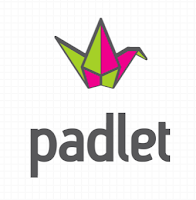As we better understand the difference and the necessity of both formative and summative assessment, the question often asked is, “What are effective ways to formatively assess my students?”
To define, formative assessments are the strategies teachers use to see if the students are “getting it”. The assessment provides indicators to the teacher as to what should be revisited and retaught. Formative assessment should be done within lesson or unit, and usually should not be graded.
I recently came upon this presentation that includes 54 ideas on formative assessment to use in your classroom. Unfortunately the presentation does not have the author’s name on it to give proper credit!
Below are a few of the assessment ideas that include the use of technology. Pick a couple that are engaging, and that you and your students can easily access. Remember, this should be a process that quickly provides you information on where your students are. Use them daily to establish a level of comfort and trust in your classroom.
Google Forms: Comments, questions and suggestions about the lesson? Students who normally would not participate in class may do so virtually.
Clickers: Give each student a student response system (or clicker) or use a service like Socrative, Poll Everywhere, or Google Docs and ask questions during class, and have students respond individually (or in groups) to the questions.
Flubaroo: Create self-marking quizzes students can take for formative feedback on their understanding.
Cold Calling: Use a procedure for asking questions which ensures that all students have a chance to be asked a question, and include students who might not otherwise participate. Apps such as TeacherKit can be used to randomly call on students without repetition or leaving anyone out.
ActivePrompt: Upload an image (like the one below via Riley Lark). Give the URL to students and ask them to place a red dot according to how they feel.
Back Channel: Using a program such as Todays Meet students are able to state ideas, discuss thinking, and share questions as a topic is being taught. Teacher is able to quickly address questions and point out interesting thinking. Students are able to build on their own understanding through the thinking of their peers. Especially great for the shy students as they have a voice through technology.

Corkboard: Students are able to collaboratively post their closing thoughts, ideas, questions, or comments on a digital corkboard. Use programs such as Padlet or Linoit.
Socrative: Students can log-in to your virtual Socrative classroom. Teachers can pre-post or issue 'on the spot questions' for students to respond to.
Twitter Board: Students are able to summarize what is learned from a lesson within a short sentence.
Photos: Chose two or three photos that represent a process. Have students write captions for each photo followed by a short summary.

 Corkboard: Students are able to collaboratively post their closing thoughts, ideas, questions, or comments on a digital corkboard. Use programs such as Padlet or Linoit.
Corkboard: Students are able to collaboratively post their closing thoughts, ideas, questions, or comments on a digital corkboard. Use programs such as Padlet or Linoit.
 It's been seven months since we launched this blog, and thought it was time to countdown our top five most popular posts. . .
It's been seven months since we launched this blog, and thought it was time to countdown our top five most popular posts. . .